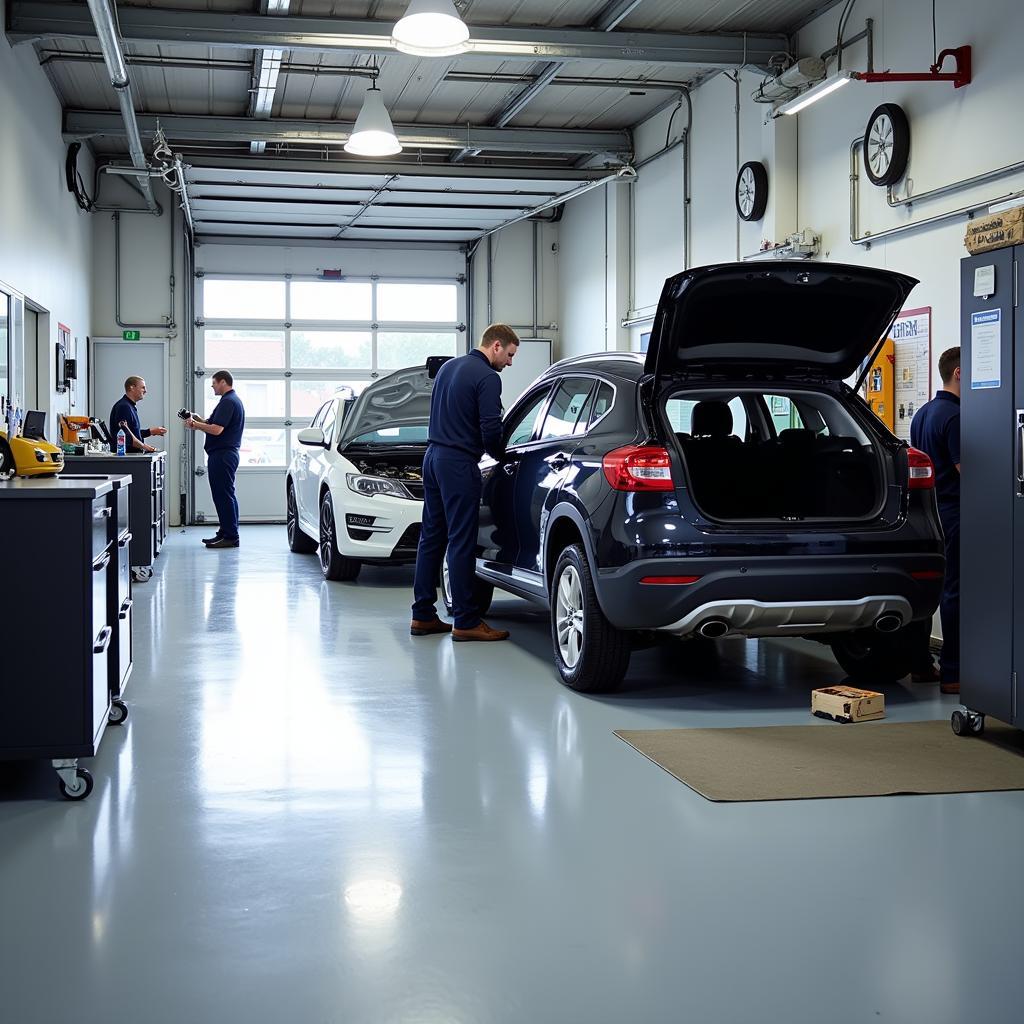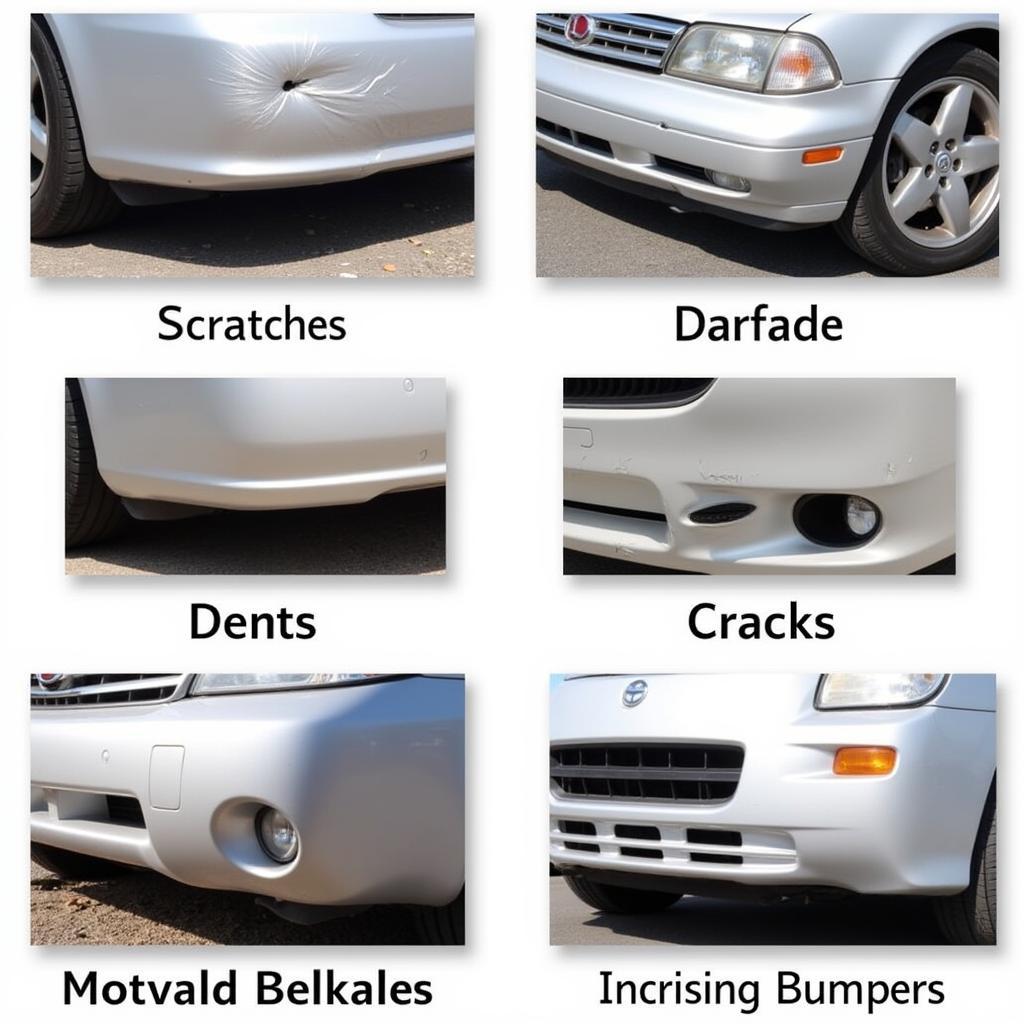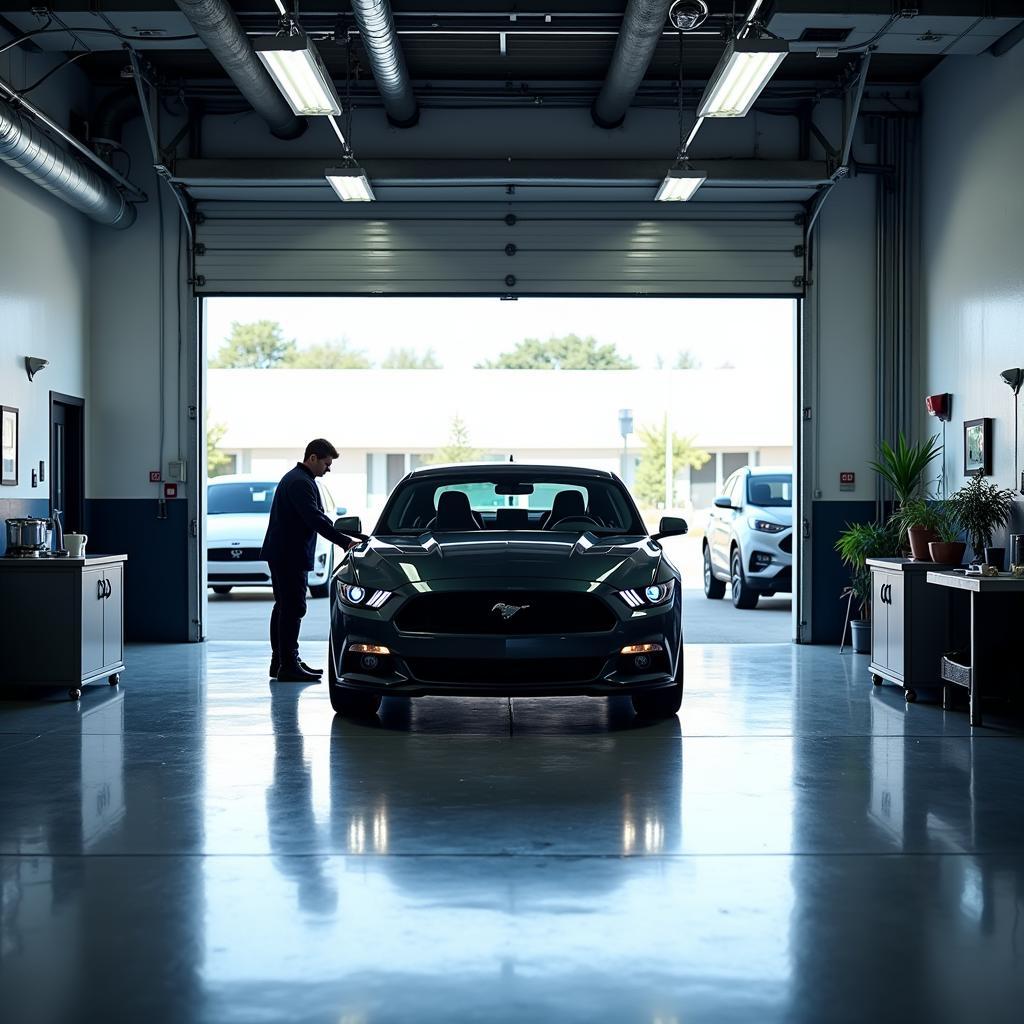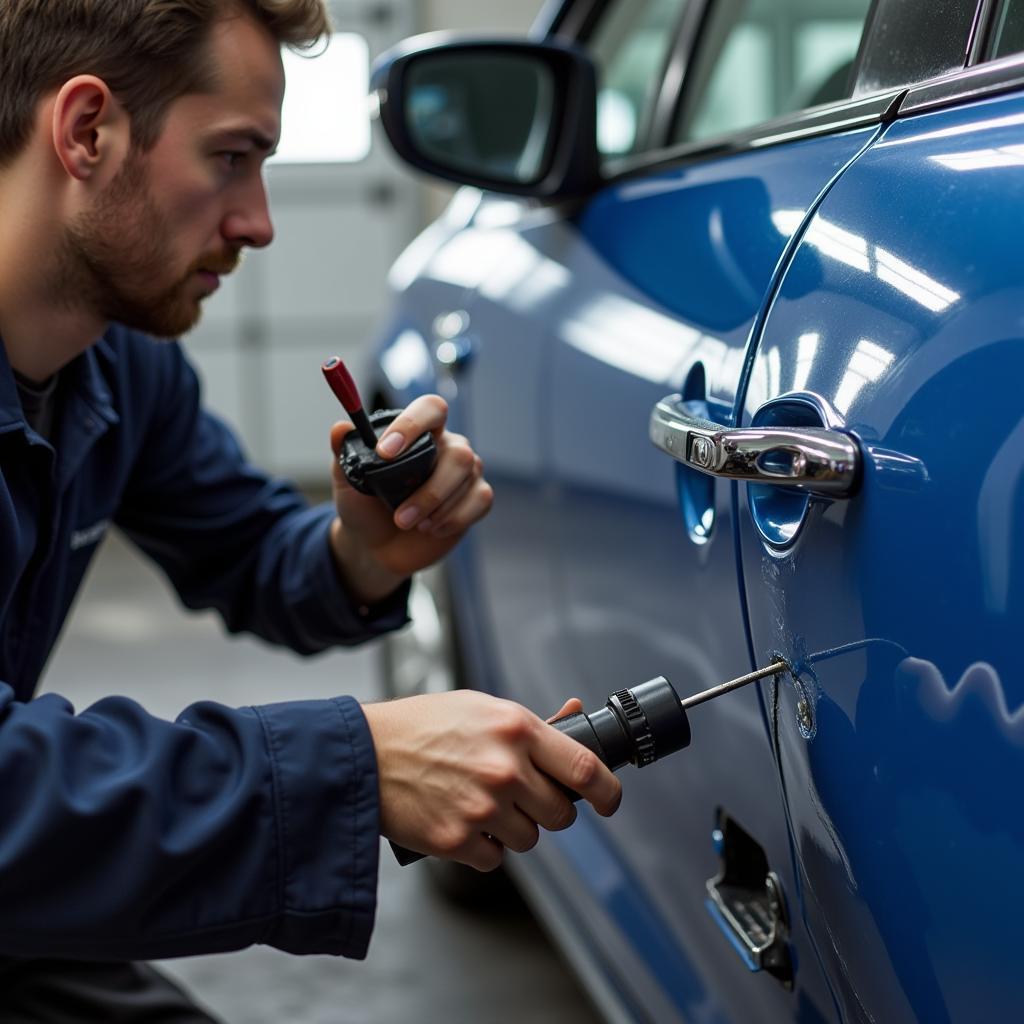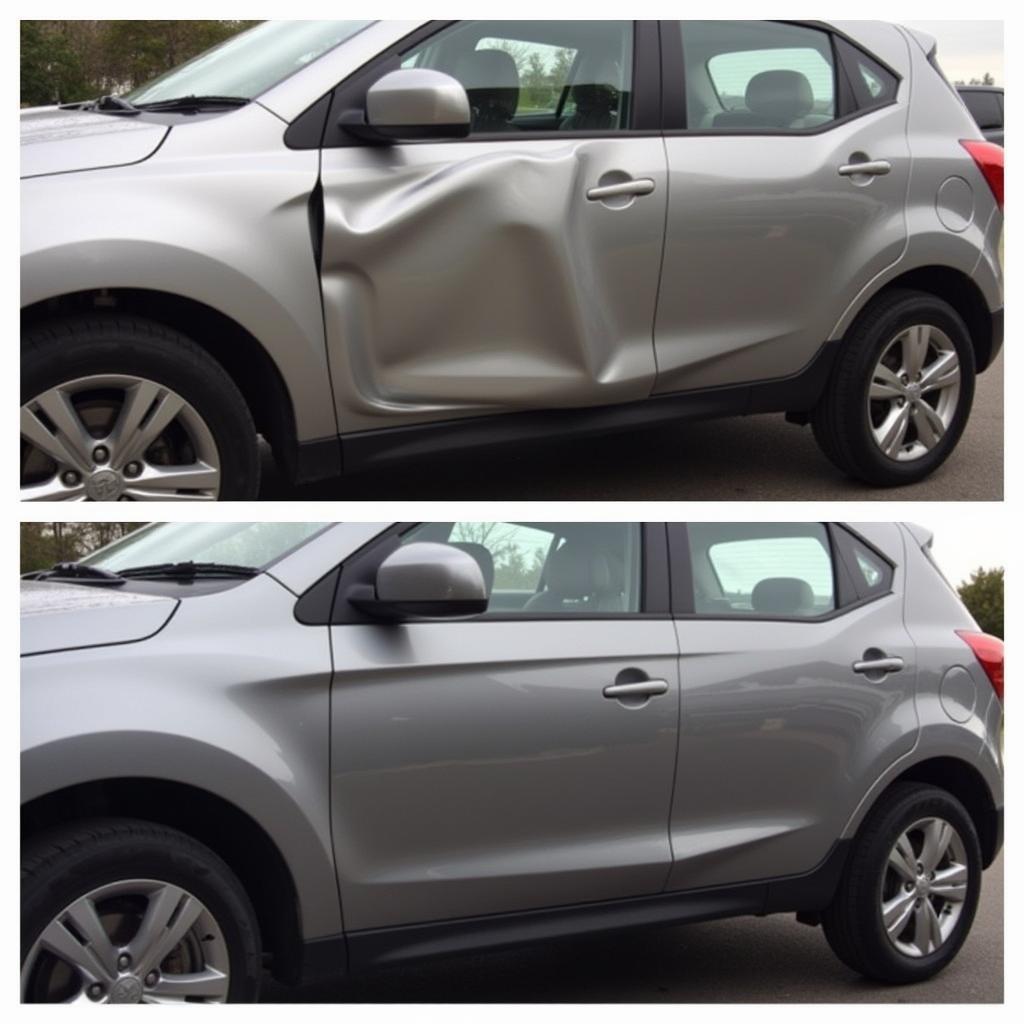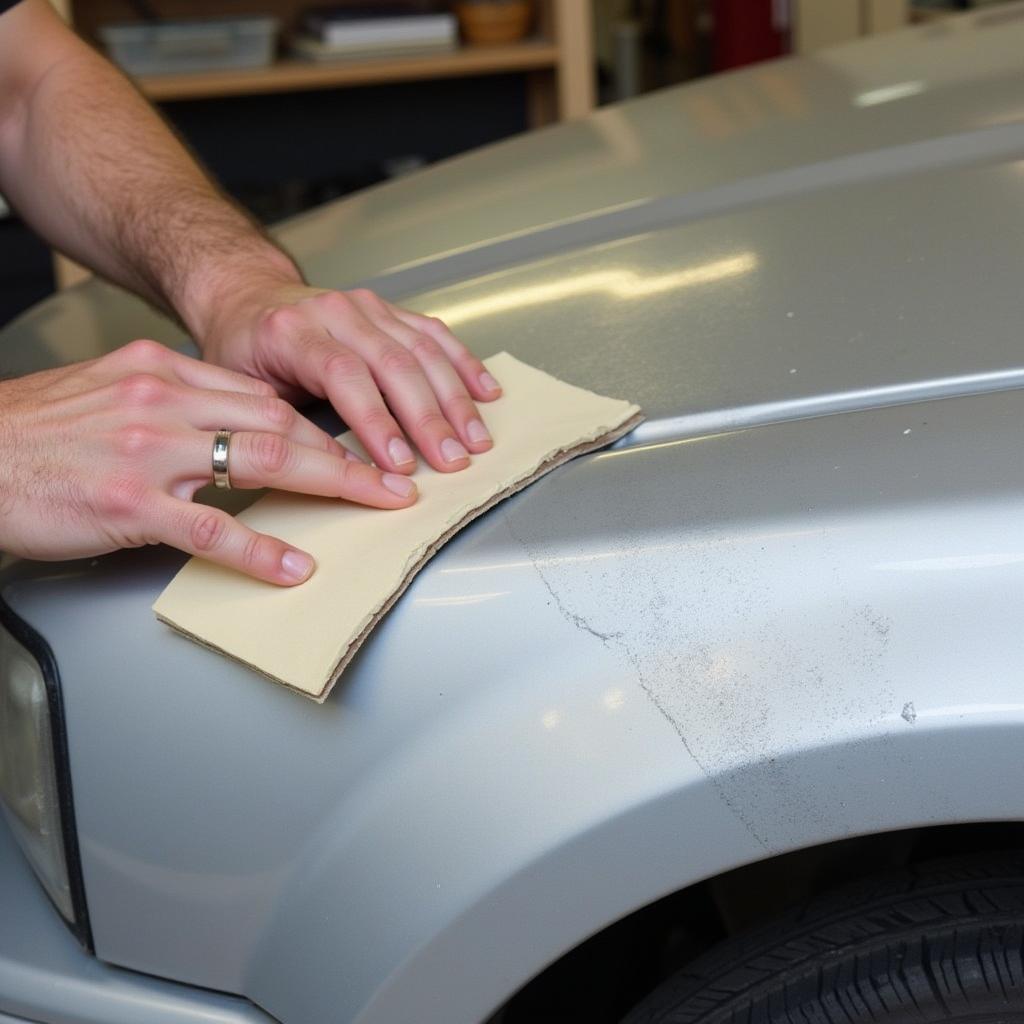
Sanding Bondo Repair on Plastic Car Bumper
Using Bondo on a plastic car bumper can be an effective way to repair minor dents, scratches, and cracks. This guide will walk you through the process of preparing the bumper, applying the Bondo, sanding it down, and achieving a professional-looking finish. Let’s dive in and learn how to restore your bumper to its former glory. This process can save you money compared to professional repairs or a bumper replacement.
Preparing the Bumper for Bondo Application
Before you even think about applying Bondo, proper preparation is key. Clean the damaged area thoroughly with soap and water, then degrease it with a wax and grease remover. This ensures proper adhesion of the Bondo to the plastic. For deeper damage, such as cracks or holes, use a plastic repair kit to reinforce the area. Roughen the surface around the damage with 80-grit sandpaper to create a better bonding surface. This will help the Bondo adhere more effectively to the plastic bumper. Remember, a well-prepared surface is the foundation of a successful Bondo repair. Want to learn more about fixing cracks? Check out our guide on how to repair a cracked bumper on car.
Mixing and Applying the Bondo
Bondo is a two-part product consisting of a resin and a hardener. Mix the two components according to the manufacturer’s instructions, ensuring a uniform pink color. Apply a thin, even layer of Bondo to the damaged area, working quickly as it starts to harden within minutes. Use a plastic spreader to smooth the Bondo and feather the edges into the surrounding area. For larger dents, you may need to apply multiple thin layers, allowing each layer to dry before applying the next. Need more information on bumper repair in general? See our guide on how to repair car front bumper.
Sanding and Finishing the Bondo Repair
Once the Bondo has fully cured, which typically takes about 30 minutes, it’s time to sand. Start with 80-grit sandpaper to shape the Bondo and remove any excess. Gradually move to finer grits, such as 180-grit, 220-grit, and finally 320-grit, to achieve a smooth, even surface. Prime the repaired area before painting to promote adhesion and prevent the Bondo from absorbing the paint.
 Sanding Bondo Repair on Plastic Car Bumper
Sanding Bondo Repair on Plastic Car Bumper
Tips for a Professional Bondo Repair
- Work in a well-ventilated area: Bondo fumes can be harmful, so ensure proper ventilation.
- Use the right tools: Invest in a good quality plastic spreader and sandpaper assortment.
- Don’t rush the process: Allow adequate drying time between coats and before sanding.
- Practice makes perfect: Don’t be discouraged if your first attempt isn’t flawless.
“A common mistake is applying too much Bondo at once,” says automotive expert, John Davis. “Multiple thin coats are always better than one thick coat for a smooth, durable repair.”
Can you use regular Bondo on plastic bumpers?
While regular Bondo can adhere to plastic, it’s not ideal. It can crack over time due to the flexibility of the bumper. Using a flexible Bondo specifically designed for plastic is highly recommended. If you have to use regular Bondo, consider adding a flex agent to improve its flexibility and durability. Interested in a complete bumper repair kit? Take a look at our car bumper repair pack.
Conclusion
Repairing a plastic car bumper with Bondo can be a cost-effective DIY project if done correctly. By following the steps outlined above, you can achieve a professional-looking repair and restore your bumper to its original condition. Remember to always prioritize safety and use appropriate protective gear during the process. If you’re looking to repair a hole in your bumper, check out our guide on how to repair a hole in a plastic car bumper. For a deeper dive into body fillers, we recommend our guide on car plastic bumper repair body filler with hardener & applicator.
FAQ
-
How long does Bondo take to dry on plastic? Typically, Bondo dries within 30 minutes, but full curing can take several hours.
-
Can I use Bondo on a cracked bumper? Yes, but reinforce the crack with a plastic repair kit first.
-
What grit sandpaper should I use for Bondo? Start with 80-grit and gradually move to finer grits up to 320-grit.
-
Do I need to prime before painting over Bondo? Yes, priming is crucial for paint adhesion and a smooth finish.
-
What is the best Bondo for plastic bumpers? A flexible Bondo designed for plastic is recommended.
-
Can I repair a large hole in a plastic bumper with Bondo? For large holes, consider a professional repair or bumper replacement.
-
How much does it cost to repair a bumper with Bondo? DIY repairs with Bondo are significantly cheaper than professional services.
Other Common Questions
What if the bumper is severely damaged?
How do I match the paint after the Bondo repair?
Can I apply Bondo in cold weather?
For more helpful tips and guides, explore other articles on our website.
Need assistance? Contact us via WhatsApp: +1(641)206-8880 or Email: [email protected]. Our customer support team is available 24/7.

